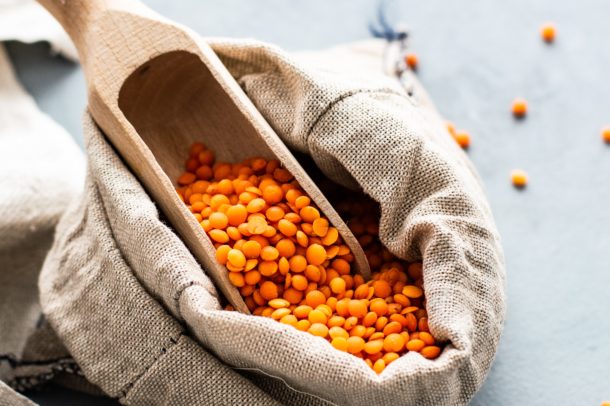Did you know that you can drastically reduce the quantity of potassium in legumes? Indeed, according to a study, it is possible to prepare legumes (in this case chickpeas and lentils) in such a way that most potassium is eliminated.
If you have chronic kidney disease, you certainly know that what you eat directly affects your health. Following your Registered Dietitian and doctor’s instructions, you may need to limit your consumption of minerals like potassium, phosphorus and sodium. If you aren’t sure, check with your kidney care team.
Traditionally, patients with a kidney disease have been advised against eating legumes. Legumes, in addition to vitamins and fibers, contain a lot of protein and minerals. Unfortunately, these minerals can be dangerous because, without proper kidney function, they accumulate in the blood, causing conditions like hyperkalemia (excess of potassium) and hyperphosphatemia (excess of phosphorus). Fortunately, a recent study has found a way for chronic kidney disease patients to safely enjoy legumes like chickpeas and lentils (Martínez-Pineda, 2019[1]).
There are 3 easy steps for the preparation of dried chick peas and lentils:
- Let the legumes soak in a bowl of water for 12 hours or more (do it before your bedtime!).
- Discard the soaking water (now full of potassium) and rinse the legumes well.
- Cook them in a pressure cooker or boil in lots of fresh water.
Note: When using canned chickpeas or lentils, the initial quantity of potassium and phosphorus is already fairly low. Soaking will reduce the potassium even futher but isn’t necessary for most people. Make sure to choose canned chickpeas and lentils without salt or rinse before using. If you are using dried legumes, it is necessary to cook them after soaking to achieve a low potassium level.
But what about phosphorus? Phosphorus is not as soluble as potassium, so it is not leached out of the legume during the soaking process like potassium is. Despite this, it has recently been demonstrated that phosphorus from legumes are poorly absorbed.
Check out our featured recipe Red Lentil Dahl to try this cooking method for a delicious, savoury recipe.
Submitted by Camélia Taklit – Edited by June Martin, RD, CDE Grand River Hospital
[1] Martínez-Pineda, Montserrat, et al. “Cooking Legumes: A Way for Their Inclusion in the Renal Patient Diet.” Journal of Renal Nutrition 29.2 (2019): 118-125.
Photo by Monika Grabkowska on Unsplash

In the article Reducing the Potassium in Legumes (10/31/19), it mentions lentils and chickpeas. Does this apply to other beans, e.g., black, great northern, navy and pink?
Please advise and thank you
JJ
Hi JJ,
Thank you for your question. We will ask one of our registered dietitians and get back to you.
Thanks so much for connecting. The article cited in this blog post looked only at chickpeas and lentils and little other studies looking at different types of beans. If you are looking to include these foods in your diet and you are on a potassium restriction, connecting with a renal dietitian can help you plan meals within your nutrition requirements.
Re: Ur comment that “canned (beans) ‘already have less potassium’ due to the canning process”, I can’t find anything that verifies that. Can you cite your source? Or, did pull that out thin air just from reasoning? In other words, would bet your (or my) life) that the potassium amount on a typical can of kidney beans is substantially overstated?
Here is the source article that talks about the potassium content of canned beans. ” rel=”noopener” target=”_blank”>Cooking Legumes: A Way for Their Inclusion in the Renal Patient Diet – PubMed (nih.gov) I hope that you find it reassuring – we did not pull it out of thin air. The absorption of potassium is complicated and is affected by multiple factors including fiber (reduces potassium absorption) and the form of potassium. Additives such as potassium chloride and potassium lactate are extremely well absorbed. Additionally the form of the food matters; you absorb more potassium from drinking a glass of apple juice than you do from eating an apple.
The analysis on a can of beans is based on the potassium content of dried beans. I am quite comfortable suggesting canned legumes to my patients but if you don’t feel confident about it then I would suggest speaking to your renal dietitian (who knows you best). Your dietitian can review the literature with you on potassium absorption (it’s pretty fascinating!). Canned legumes are an option for those living with kidney disease but you don’t have to choose them if you aren’t comfortable.